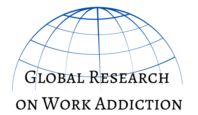Methodology of global survey on work addiction
The study is part of a large international research project examining the role of macro-level (i.e., cultural and socioeconomic), meso-level (i.e., organisational), and micro-level (i.e., individual) factors in work addiction and related health problems. The survey will be conducted during the winter of 2022 and spring of 2023 in over 60 countries around the world, including six continents. It is the most extensive study on work addiction conducted to date.
Impact of the study
One of the aims of our research is to provide data on the proportion of the enormous costs of chronic stress in and outside work environments that are directly attributed to work addiction worldwide. Most importantly, we want to understand which factors contribute most to work addiction, work-related depression, and burnout to develop best practices for their prevention and treatment. The results of this research can provide a scientific basis for preparing recommendations for governments concerning working conditions as well as influence organizations’ policies and procedures regarding work climate and organizational values to minimize the risk of the development of work addiction and mitigate its effect on health and well-being. As such, it may contribute to a significant reduction in human suffering worldwide and a notable improvement in productivity for organizations, institutions, and country-level economics.
Global survey
Participation criteria in the global survey are:
- being an adult
- being employed full-time for at least one year in an organisation with at least 10 employees.
Immediately after filling out the survey, all participants will obtain detailed feedback on their psychosocial functioning at work, including risks of work addiction, work-related depression, and burnout, and potential organisational and individual risk factors contributing to their functioning at work. It may help identify personal and organisational strengths and weaknesses and improve job performance and well-being in and outside the work environment. Participants will be directed to a webpage where detailed information concerning the interpretation of their results will be available alongside recommendations on potential self-help and professional solutions.
